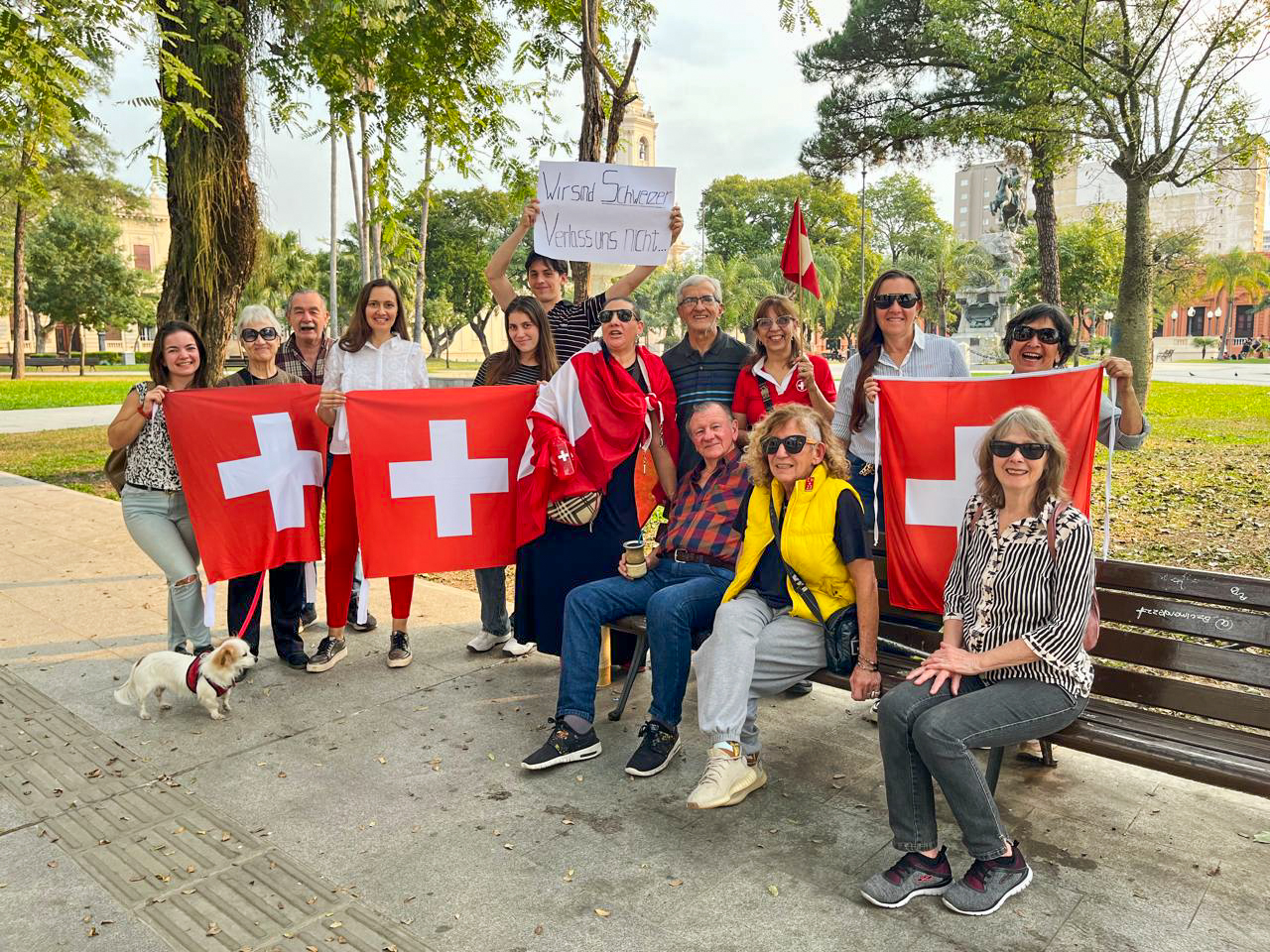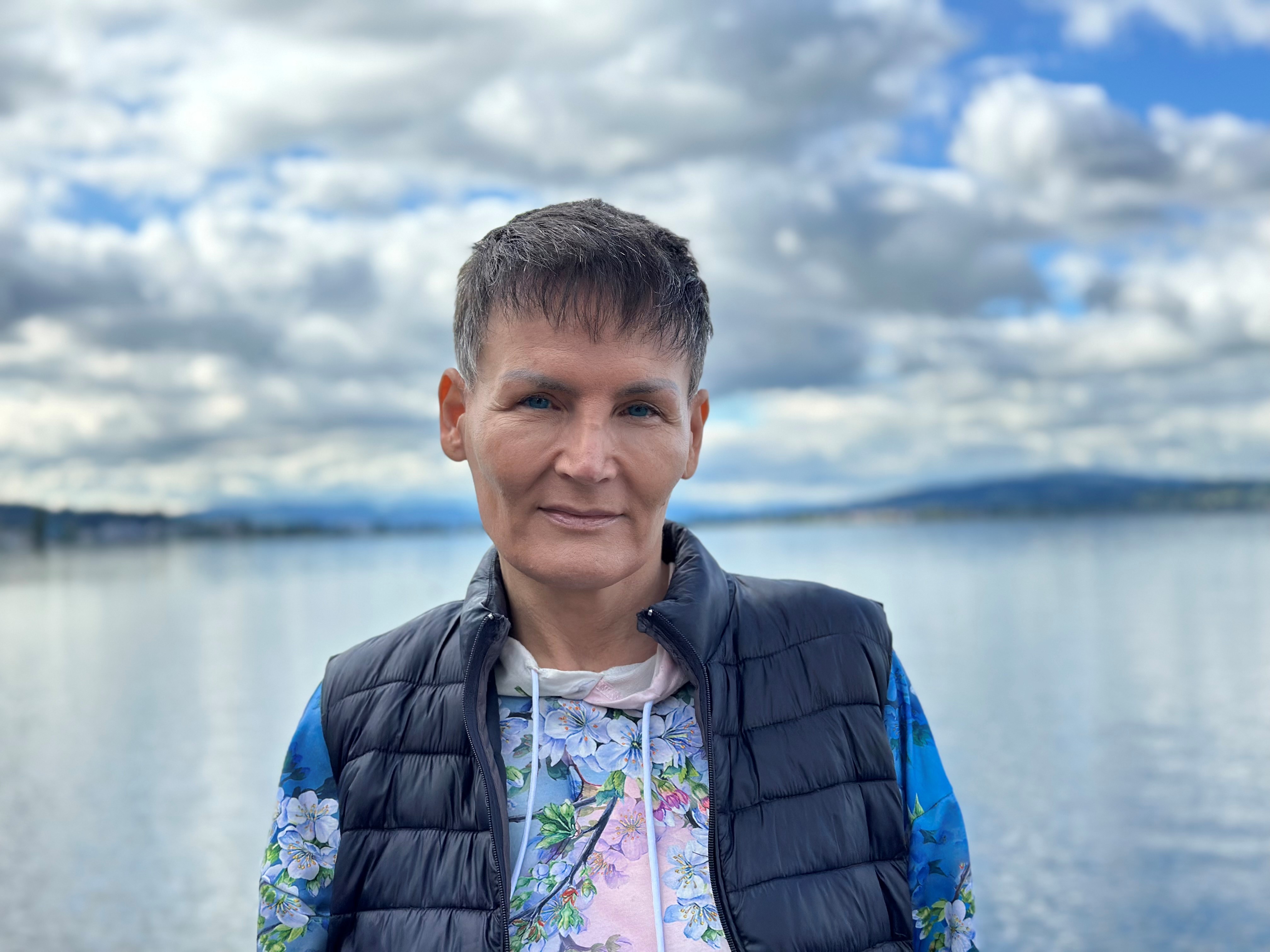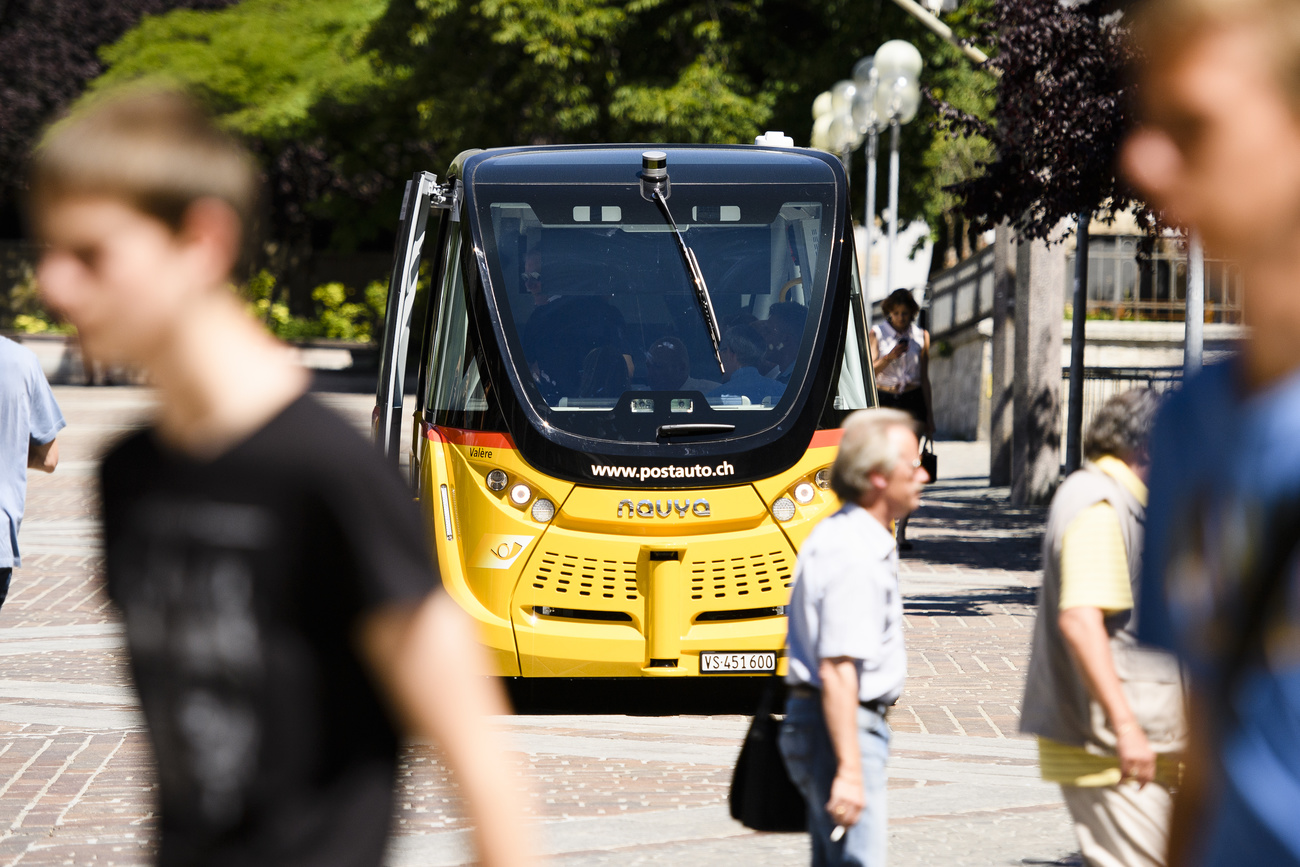Village floods after voters sink protection measures

Uerkheim, a village outside the Swiss city of Zurich, suffers from frequent flooding. Twice, the citizens agreed on flood protection measures. And twice they later reversed their decision. Then came the worst flood in the village’s history.
A thin red line marks the extent of the damage. Painted on the rough exterior wall of the small village shop, it shows how high the waters of the nearby River Uerke rose in the summer of 2017: 1.87 metres over the normal level.
In July, the river rose so high that the village suffered the biggest flood in its history.
Silence
In the village shop, a machine to dry out the freshly poured concrete floor is humming away. There are no groceries here anymore, but a few steps further they are on offer in a white construction container. It’s an interim solution.
The woman who runs the shop with her husband shakes her head. She doesn’t want to talk to journalists anymore. She has had too many enquiries in the past few months – from newspapers, radio and television.
What happened in Uerkheim was not just a natural disaster, but also shows how tricky direct democracy can be.
Warning
Uerkheim, a village 40km (25 miles) west of Zurich with 1,300 inhabitants, has battled with floods for many years. In 2012, a violent storm hit the village, flooding cellars and submerging cars.
Shortly afterwards, municipal authorities sat down with representatives of the cantonal underground construction office to come up with flood protection measures. They agreed to raise the flat concrete bridge over the river, so that debris and branches could no longer cause blockages there.
With a small majority, voters approved the necessary credit of CHF635,000 ($640,440) at the local assembly. The project would cost much more – CHF2.5 million. But in the case of flood precautions, the canton and the federal government are also obliged to pay up. The federal government would contribute a third and the other two thirds were shared between the canton (60%) and the municipal authority (40%).
Reversed at the ballot box
But despite the cost-sharing, the project was a thorn in the side of many of the people of Uerkheim because it was so expensive. Opponents also said it didn’t offer enough protection for the whole village. They called a referendum and the project was put to a vote – where it went adrift. Turnout was 50%; 362 citizens said no, and only 134 voted yes.
So the Uerkheim municipal authorities set to work on a new proposal with the canton. In the summer of 2015, they presented the local assembly with a new, comprehensive flood protection project: they wanted to undertake 40 construction measures for a total cost of CHF5.8 million. The municipality’s contribution was CHF1.5 million.
Reversed at the ballot box (II)
History repeated itself. At the assembly, citizens gave the project the green light. Again, there was a referendum. And again, the project was rejected at the ballot box.
How could that happen? Months later, people were still baffled. “I can’t explain it,” says Markus Gabriel, the chairman of the municipality. “Probably the project was too expensive for a lot of people.” Malicious tongues muttered that the inhabitants of Uerkheim were more afraid of rising taxes than they were of rising flood waters.

Silence (II)
Approached on the streets, none of the inhabitants wants to talk. Even Peter Leuenberger, who masterminded the referendums, says by text that he doesn’t want to give any more information.
“Yes, it was frustrating,” says Markus Gabriel. “But the people decided. We can’t interfere with that.” He adds: “Back then I said that it is not a question of whether the floods will come again, but when.” And they came very soon.
CHF80 million
For weeks, a big heatwave shimmered not just above the valley, but over the whole of Switzerland. Then on July 8, 2017, a Saturday afternoon, a pitch-black storm-cloud appeared in the sky, approaching from the west.
Rain poured down in torrents. Gales whipped through the valley and hailstones the size of cherries thundered down like shots from the sky. The peaceful little Uerke swelled rapidly, escaping its concrete bed and turning the main street into a surging river.
The Uerke flattened fences, flooded cars and swept up a bridge. A reader told the Swiss tabloid newspaper Blick: “The whole of Uerkheim is under water. No cars can drive in the area surrounding the village hall.”
Fortunately, no one was hurt in Uerkheim. But property was damaged: cars, garages, cellars, washing machines, boilers and countless irreplaceable mementos. In Uerkheim and the whole valley – four other Aargau municipalities were affected – the damage amounted to the horrendous sum of CHF80 million.
Everyone knows everyone in the village. Everyone knows someone whose property was flooded, whether a friend, relative, colleague or neighbour. Markus Gabriel, the chairman of the municipality, helped his father with his waterlogged cellar. The fire and community services were on permanent call.
Gabriel’s deputy in the municipal council, who runs a garage business near the River Uerke, was the hardest hit. There was so much damage that he later had to demolish two buildings.

Primeval force
Three months later, Markus Gabriel stands on a concrete bridge with the Uerke rippling placidly below. It’s almost impossible to imagine how this gentle stream could have raged so violently such a short time ago. “We estimate that it was about 45 cubic,” says Gabriel, meaning that 45 cubic metres of water surged through the village – per second. The Uerkheim protection project was designed to cope with 18 cubic metres of water per second.
“It would have helped a bit,” says Gabriel. “But we would have had a flood anyway.” Markus Zumsteg of the Aargau cantonal government confirms that. “The storm on July 8 was indeed much bigger than planned for in 2015.”
After the flood is before the flood
Cantonal experts are studying the disaster. How it came about, the volume of the surge, and how it can be statistically evaluated.
This will serve as the basis for the next flood protection project. “I am convinced that the population will evaluate the need for such a project differently after last summer,” Zumsteg says.
But Markus Gabriel won’t be the one to present and campaign for this project. In spring he had announced that he would stand again for election. But after the terrible storm, he says, “I have no new arguments to push again for a new project.”
Gabriel no longer wants to campaign for a third time with the same arguments, and possibly face defeat again. The flood has exacted its toll: After 24 years in the municipal government, Markus Gabriel is standing down as the village leader at the end of the year.
Translated from German by Catherine Hickley

In compliance with the JTI standards
More: SWI swissinfo.ch certified by the Journalism Trust Initiative













You can find an overview of ongoing debates with our journalists here . Please join us!
If you want to start a conversation about a topic raised in this article or want to report factual errors, email us at english@swissinfo.ch.